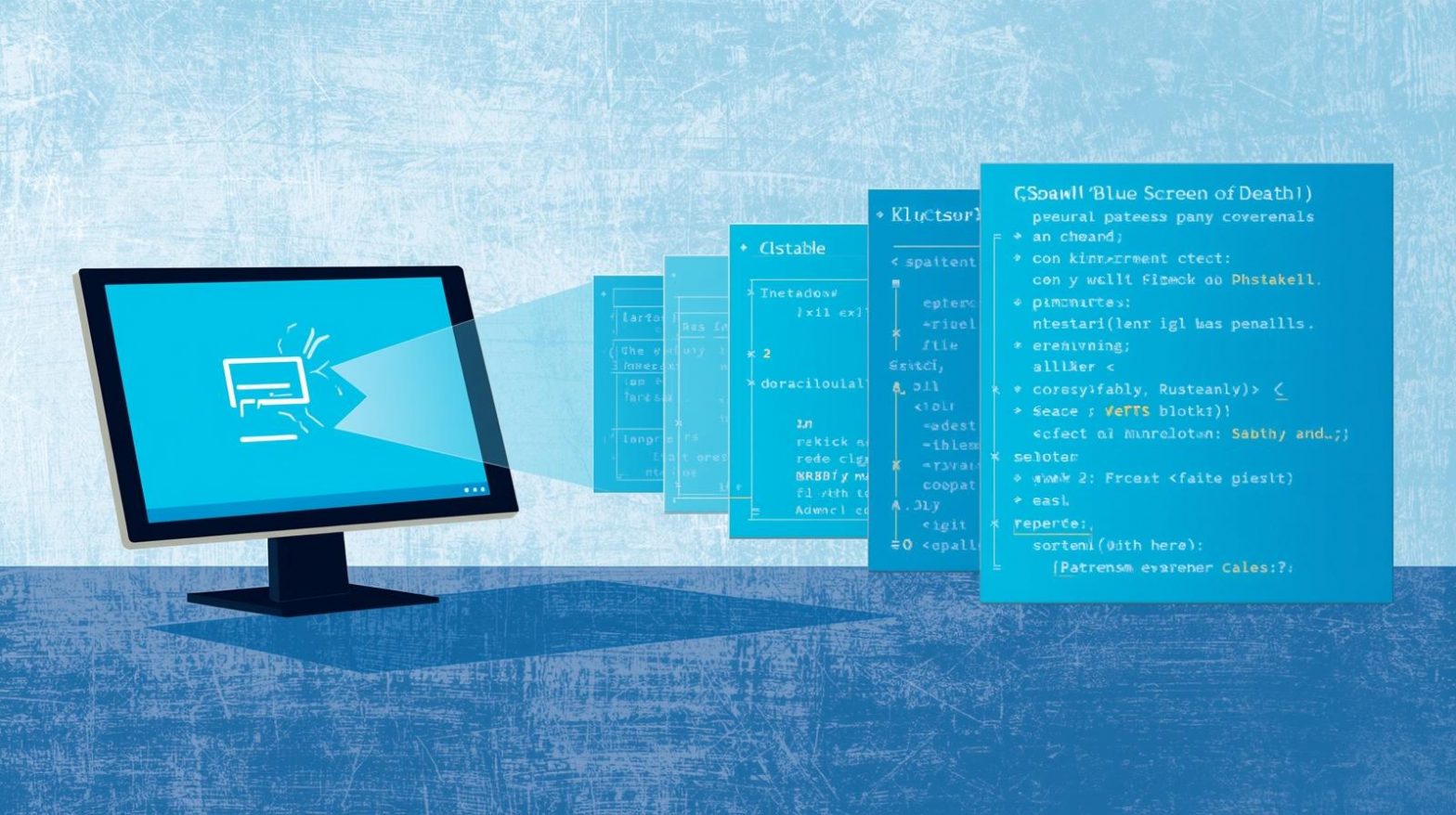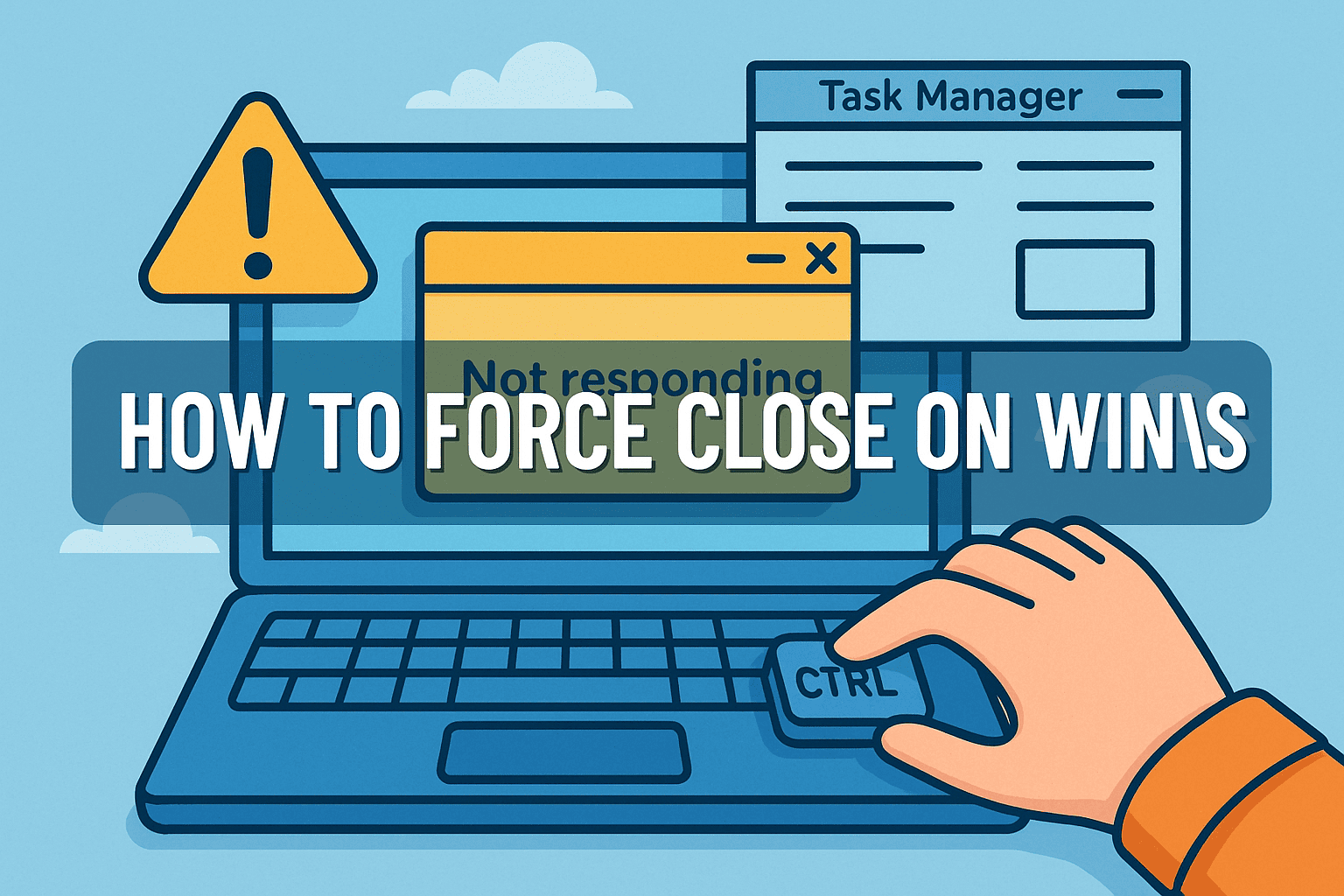Fix Blue Screen of Death on Windows PCs
Updated on November 11, 2025, by ITarian

Ever been working on something important when suddenly your PC freezes and displays a blue error screen with strange text? That’s the infamous Blue Screen of Death (BSOD). For IT managers, cybersecurity experts, and executives overseeing digital infrastructure, understanding how to fix blue screen of death is essential for minimizing downtime and ensuring systems stay stable.
This article will help you understand what causes BSODs, how to interpret the error messages, and the exact steps you can take to resolve them effectively.
What the Blue Screen of Death Means
A BSOD occurs when your Windows operating system encounters a critical error it can’t recover from safely. To prevent further system damage, Windows stops everything and displays a blue diagnostic screen.
Key Takeaways:
-
Stop Code Displayed: The blue screen shows an error message and a stop code that identifies the type of issue.
-
Crash Dump File: Windows creates a memory dump file that records the error for troubleshooting.
-
System Halt: The purpose of the halt is to protect your hardware and software from corruption.
In essence, a BSOD is not just a crash—it’s your system’s way of saying, “Something’s seriously wrong, and I’m protecting myself.”
Common Causes of the Blue Screen of Death
Knowing what typically triggers BSODs helps you pinpoint and resolve them faster.
1. Faulty Hardware
Defective RAM, overheating CPUs, or failing hard drives are among the most frequent culprits.
2. Corrupted or Outdated Drivers
Drivers connect your hardware and operating system. When they become corrupted or outdated, system instability and BSODs often follow.
3. Corrupted System Files
Incomplete Windows updates or malware infections can damage essential system files.
4. Power or Overheating Problems
Excessive heat or unstable power delivery can cause system components to malfunction unexpectedly.
5. Malware and Security Threats
Malicious software that interferes with core system processes can lead to BSODs, particularly rootkits and trojans that affect low-level system functions.
Preliminary Steps Before Troubleshooting
Before diving into complex fixes, stabilize your system and collect basic data.
-
Write Down the Stop Code – Note the error shown on the BSOD (e.g., “CRITICAL_PROCESS_DIED” or “MEMORY_MANAGEMENT”).
-
Disconnect New Hardware – If you recently added RAM or external devices, unplug them and restart.
-
Boot in Safe Mode – Safe Mode loads only essential drivers, helping you identify whether a third-party application is responsible.
-
Backup Your Files – BSODs can lead to data loss. Always back up essential information first.
Once these steps are complete, proceed with the structured fixes below.
Step-by-Step: How to Fix Blue Screen of Death
Step 1: Update Windows and Drivers
Outdated system files and drivers are leading causes of BSODs.
-
Open Settings → Update & Security → Windows Update.
-
Click Check for updates to ensure your system is current.
-
For drivers, open Device Manager, right-click each component (especially graphics, storage, and network adapters), and select Update driver.
If you recently installed a new driver and the BSOD started afterward, choose Roll Back Driver to revert.
Step 2: Uninstall Problematic Updates or Apps
If crashes began after a system update or app installation:
-
Go to Settings → Recovery → Advanced startup options.
-
Choose Uninstall latest quality update or feature update.
-
Restart and see if the issue resolves.
For software, remove suspicious or recently installed programs from Settings → Apps → Installed apps.
Step 3: Repair System Files
Corrupted Windows system files can easily trigger BSODs.
-
Open Command Prompt (Admin).
-
Type:
-
Once finished, run:
These commands scan and repair essential system files automatically.
Step 4: Check for Hardware Issues
Faulty hardware is a prime cause of repeated BSODs.
To test your memory:
-
Press Windows + R, type
mdsched.exe, and hit Enter. -
Choose to restart and check for memory problems.
To check your disk:
-
Run Command Prompt as Administrator and enter:
-
Reboot your PC when prompted.
If errors are found, consider replacing the affected hardware.
Step 5: Monitor Overheating and Power
Use system monitoring tools to check CPU and GPU temperatures.
-
Clean internal fans and ensure proper ventilation.
-
Replace the thermal paste if the CPU frequently overheats.
-
Check that your power supply unit delivers adequate and stable voltage.
Overheating or power surges can cause intermittent BSODs under heavy load.
Step 6: Scan for Malware
Malware can corrupt critical processes and cause recurring blue screens.
-
Run a full system scan using Windows Security or reputable antivirus software.
-
For persistent infections, use Windows Defender Offline Scan.
-
Disconnect from the internet during the scan to isolate potential threats.
Once malware is removed, restart and check stability.
Step 7: Use System Restore or Reset Windows
If none of the above fixes the problem:
-
Open Settings → System → Recovery.
-
Select System Restore and choose a point before the BSODs began.
-
Alternatively, use Reset this PC and select Keep my files to reinstall Windows while retaining data.
This often eliminates software corruption beyond repair.
Advanced Fixes for IT and Cybersecurity Teams
For enterprise environments or advanced users, deeper diagnostics help isolate issues efficiently.
1. Analyze Crash Dump Files
When a BSOD occurs, Windows generates a minidump or memory dump file located in C:\Windows\Minidump. Use WinDbg or BlueScreenView to analyze these files and identify the exact driver or process responsible.
2. Examine Event Viewer Logs
Go to Event Viewer → Windows Logs → System to inspect crash events. Look for error IDs and failure timestamps.
3. Disable Automatic Restart
Automatic restart hides error codes.
-
Right-click This PC → Properties → Advanced system settings → Startup and Recovery.
-
Uncheck Automatically restart under System failure.
This keeps the BSOD screen visible for documentation.
4. Update BIOS or UEFI Firmware
Outdated BIOS firmware can cause hardware communication issues. Visit your motherboard manufacturer’s site to download the latest version. Follow instructions carefully to avoid bricking your system.
5. Check for Conflicts in Enterprise Networks
If the BSOD affects multiple devices, look for faulty driver rollouts, group policy errors, or corrupted Windows images in your update management systems.
Preventing Future Blue Screen Errors
Once your system is stable, adopt preventive habits to avoid recurrence.
-
Perform regular driver and Windows updates.
-
Avoid using unofficial drivers or optimization tools.
-
Maintain adequate free disk space (at least 10–15% of total capacity).
-
Run regular virus scans to eliminate hidden malware.
-
Keep your PC cool and dust-free.
-
Use reliable surge protection and uninterruptible power supplies.
For business environments, deploying endpoint monitoring and patch management solutions helps maintain long-term system stability.
Troubleshooting: Common Stop Codes
Here are some frequent BSOD stop codes and their meanings:
| Stop Code | Description | Possible Fix |
|---|---|---|
| CRITICAL_PROCESS_DIED | A key system process stopped working | Run SFC and DISM commands |
| MEMORY_MANAGEMENT | RAM issues | Test and replace faulty memory |
| SYSTEM_SERVICE_EXCEPTION | Driver or system service error | Update or roll back drivers |
| INACCESSIBLE_BOOT_DEVICE | Boot drive not detected | Check SATA cables and BIOS settings |
| IRQL_NOT_LESS_OR_EQUAL | Faulty driver accessing invalid memory | Update all drivers |
| PAGE_FAULT_IN_NONPAGED_AREA | Faulty hardware or antivirus conflict | Disable antivirus temporarily or check RAM |
Knowing what these mean accelerates problem-solving and helps IT teams act decisively.
FAQ Section
Q1: Is a BSOD dangerous for my computer?
Not directly. The blue screen protects your computer from further harm by stopping operations. However, frequent crashes may indicate deeper hardware or software issues.
Q2: What’s the first thing I should do after a BSOD?
Take note of the stop code and restart in Safe Mode. Then follow the troubleshooting steps from updating drivers to scanning for malware.
Q3: Can overheating cause BSOD?
Yes. Overheating components, especially CPUs and GPUs, often trigger BSODs due to thermal protection mechanisms.
Q4: Should I reinstall Windows after a BSOD?
Only if other fixes (updates, repairs, system restore) fail. A full reinstall wipes corruption but should be a last resort.
Q5: Can I fix BSODs permanently?
You can minimize the chances by maintaining hardware, keeping software current, and monitoring system performance regularly.
Final Thoughts
The Blue Screen of Death can seem intimidating, but with the right approach, it’s entirely fixable. Understanding how to fix blue screen of death ensures that system disruptions remain minimal and your devices stay healthy and secure.
For IT managers and cybersecurity teams, combining proactive maintenance, centralized monitoring, and automated patching is the best defense against such critical failures.
Ready to strengthen your endpoint stability and security posture?
Start your free trial with ITarian and gain complete control over your systems with advanced patch management, monitoring, and recovery solutions.














